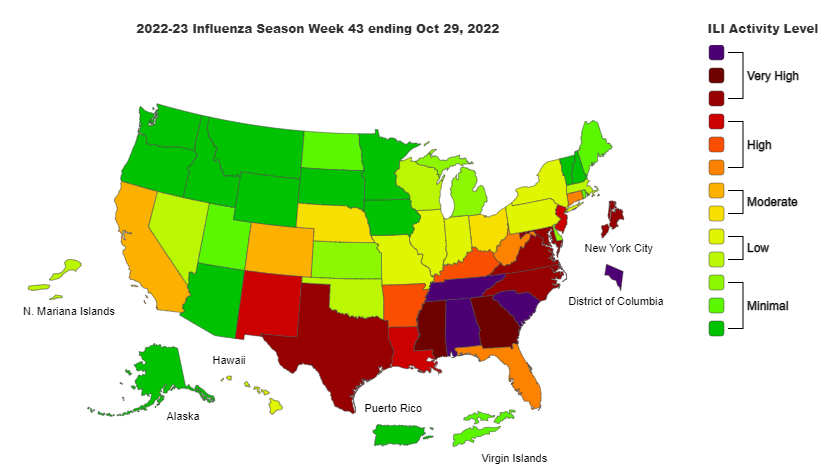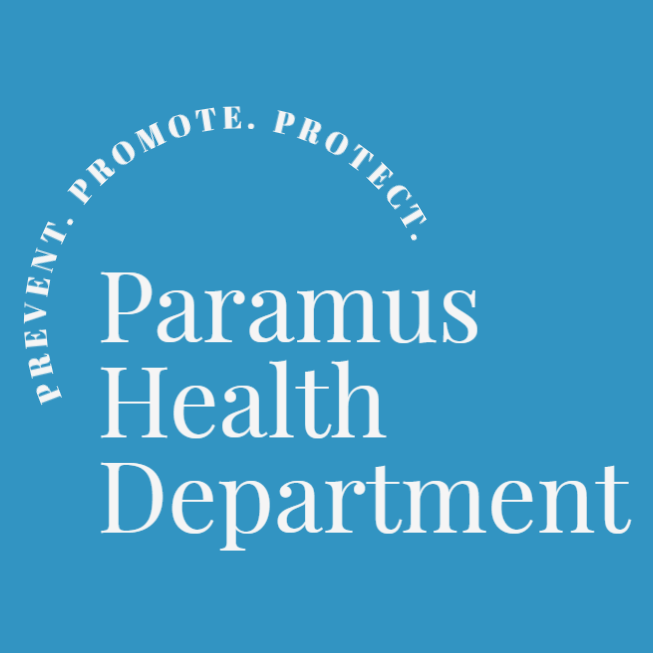On Friday, November 4, 2022, federal health officials announced that the United States has crossed the epidemic threshold for influenza. The United States is currently experiencing a resurgence of many different respiratory illnesses other than COVID-19; among these illnesses are influenza, respiratory syncytial virus (RSV), rhinovirus, and enterovirus. According to the Centers for Disease Control and Prevention, flu hospitalizations are currently higher at this point in the flu season than they have been since the 2010-2011 flu season.
Because the United States has crossed the epidemic threshold, extra steps are being taken to ensure that additional personnel and supplies like ventilators and personal protective equipment are available to states upon request. As some regions are currently experiencing very high influenza activity levels, hospitals are already facing severe overcrowding, prolonged wait times, and a shortage of beds. In extreme cases, some hospitals are now experiencing wait times over eight hours, and are implementing policies which limit the number of guests allowed per patient. According to Dawn O’Connell, Assistant Secretary of Health and Human Services for Preparedness and Response, “we are monitoring capacity across the country sharing best practices to reduce the strain on systems and standing by to deploy additional personnel and supplies as needed.”

As of Friday, November 4, 2022, the Centers for Disease Control and Prevention estimate that there have been 1.6 million illnesses, 13,000 hospitalizations and 730 deaths from influenza, including two deaths of children so far during this flu season. It is important to remain vigilant, especially as the holiday season is quickly approaching. With increased travel and upcoming family gatherings, there will be a greater chance for influenza transmission.
While most people make a full recovery from the flu, some develop life-threatening complications including pneumonia, myocarditis (inflammation of the heart), and multi-organ failure. Others with chronic lung and heart diseases might also experience their conditions worsen when infected with the flu.
Those who are infected with the flu often experience:
- Fever
- Chills
- Cough
- Sore throat
- Runny or stuffy nose
- Muscle or body aches
- Headaches
- Fatigue (tiredness)
- Vomiting and diarrhea (more common in children than adults)
It is especially important to ensure that those who are at higher risk of developing severe complications from influenza, including people 65 years and older, people of any age with certain chronic medical conditions (such as asthma, diabetes, or heart disease), pregnant people, and children younger than 5 receive medical attention if experiencing any of these warning signs:
Children
- Fast breathing or trouble breathing
- Bluish lips or face
- Ribs pulling in with each breath
- Chest pain
- Severe muscle pain (child refuses to walk)
- Dehydration (no urine for 8 hours, dry mouth, no tears when crying)
- Not alert or interacting when awake
- Seizures
- Fever above 104°F
- In children younger than 12 weeks, any fever
- Fever or cough that improve but then return or worsen
- Worsening of chronic medical conditions
Adults
- Difficulty breathing or shortness of breath
- Persistent pain or pressure in the chest or abdomen
- Persistent dizziness, confusion, inability to arouse
- Seizures
- Not urinating
- Severe muscle pain
- Severe weakness or unsteadiness
- Fever or cough that improve but then return or worsen
- Worsening of chronic medical conditions
Vaccine
While September and October are the optimal months to receive your flu vaccine, it is not too late to receive your vaccine for the 2022-2023 flu season to protect yourself and those around you from infection. Data shows that this year’s flu vaccine can reduce your risk of hospitalization by about 50%. To find a flu vaccine near you, please visit Vaccines.gov/Find-Vaccines.
Treatment
If you become infected with influenza, symptoms can often be treated by getting rest, staying hydrated, and taking medication to reduce the severity of symptoms. Medications including acetaminophen and ibuprofen can be taken to reduce your fever. Further, antiviral medications including oseltamivir, branded as Tamiflu, can be prescribed to treat influenza for high-risk and non-high-risk individuals within 48 hours of their illness developing.
Additional Resources
For more information about influenza, please visit CDC.gov/Flu and NJ.gov/health/cd/topics/flu.shtml.

